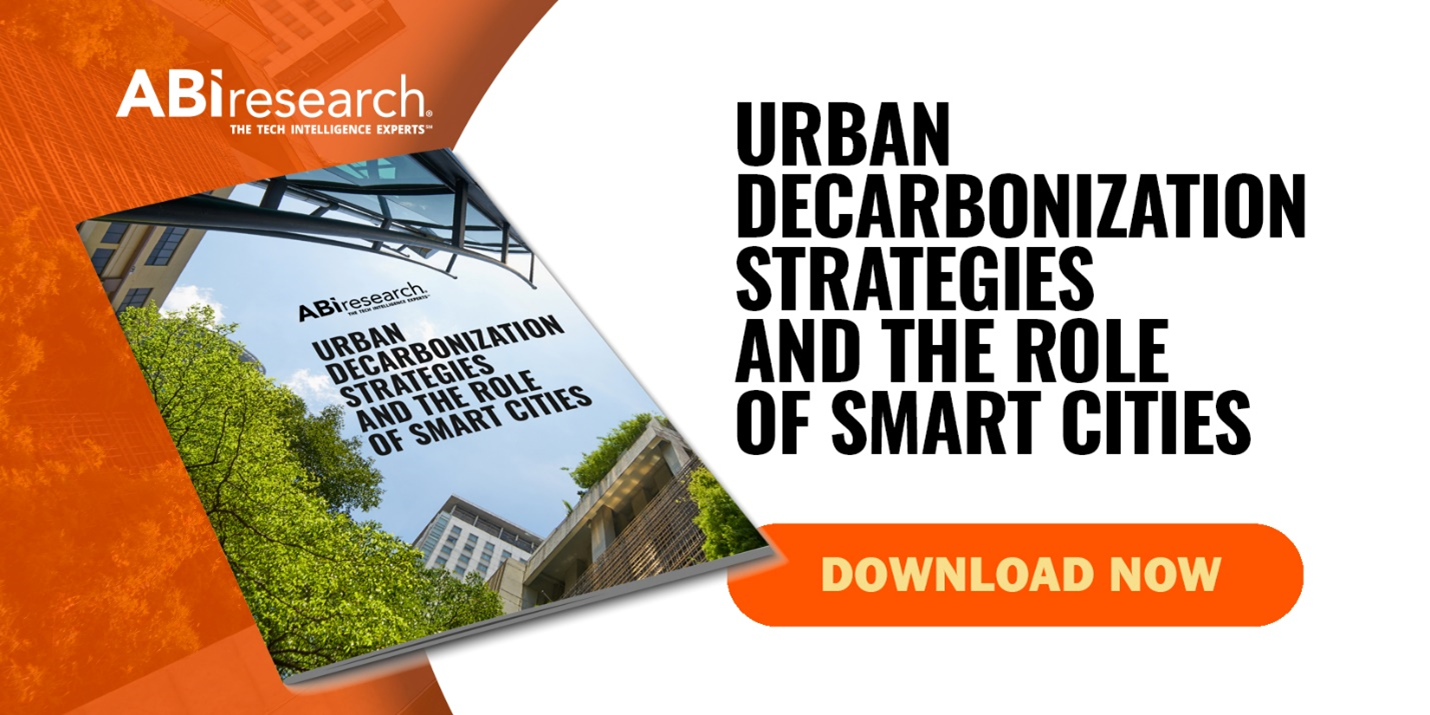As cities account for the majority of carbon emissions on our planet, sustainability efforts should start here. And what better way to see green initiatives, projects, and investment programs in action than to check out seven real-world examples of the most sustainable cities in the world?
1. Ithaca, New York
The first sustainable city example on the list comes from Ithaca, New York. In 2019, the city board unanimously voted to adopt a Green New Deal with the main goal of becoming carbon-neutral by 2030. By 2025, the town aims to deliver 100% renewable electricity to its residents and reduce the Greenhouse Gas (GHG) emissions from the town fleet of vehicles by 50%.
Some of the accomplishments Ithaca has made in relation to green development include:
- Replacement of the city's existing streetlights with LED technology
- Development of a residential clean energy scoring system to improve the energy efficiency of existing homes
- Installation of an EV charging station at the town hall. Additionally, there’s a Tesla Supercharger station located at the local Trader Joe’s.
Figure 1: Tesla Charging Point, Ithaca, New York
(Source: PlugShare)
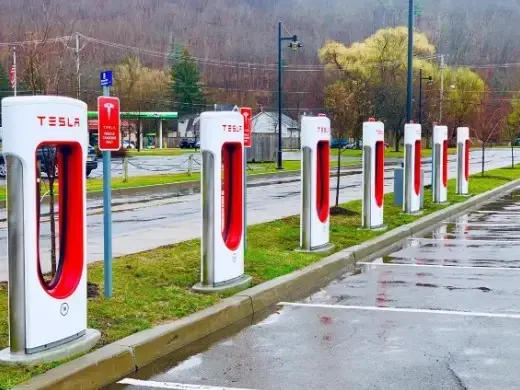
2. Los Angeles, California
Los Angeles has very lofty decarbonization goals, targeting carbon neutrality by 2035. Fortunately for LA, the city has the benefit of a state-owned utility to manage the energy sources powering the grid.
LA has been ranked as the number 1 Solar City in America for eight out of the last nine years. The city has enough clean energy (through solar power) for more than 140,000 homes. Moreover, LA has more electric vehicles and charging stations than any other U.S. city, has piloted a recycled plastic asphalt process, and applies the Singapore Index to promote city biodiversity.
Figure 2: Solar Panels Installed on Roofs in Los Angeles
(Source: GreenMatters)
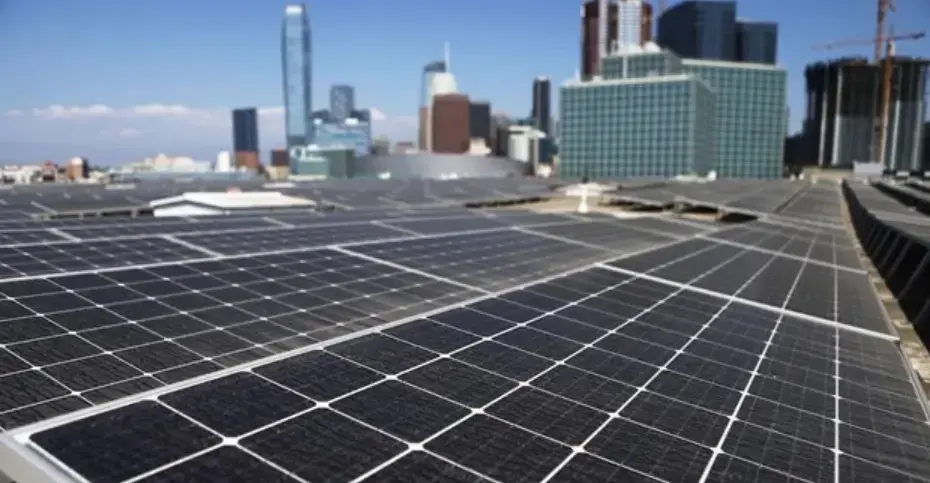
3. Bristol, UK
Bristol is considered one of the greenest cities in the United Kingdom. The city has had a major influence on United Nations (UN) climate change initiatives over the years. In a 2022 study from clothes2order, Bristol received a sustainability score of 6.15 out of 10, which ranked seventh among cities in the UK. It was reported that the city had:
- 928 renewable energy sites
- 65.5 average university sustainability rating
- 47.1% recycling rate
- 28.5 charging stations per 100,000 people
However, Bristol needs to focus on creating more bodies of water and reserving a greater amount of space for the natural environment.
Figure 3: Graph of the Requirements to Meet Bristol’s 2030 Net-Zero Goals
(Source: Center for Sustainable Energy)
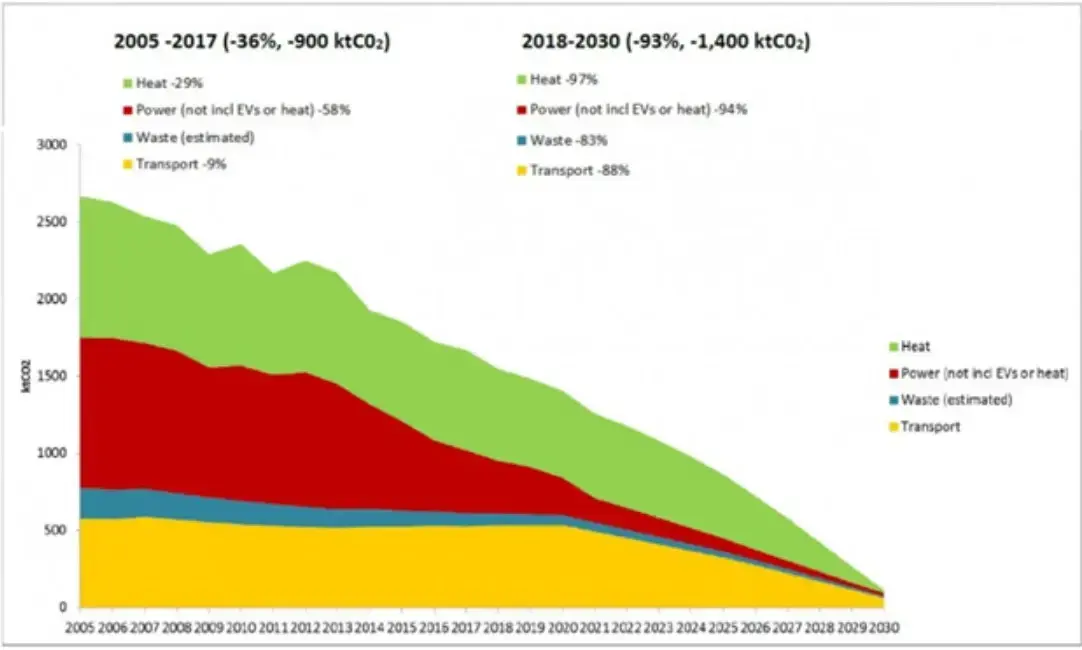
4. London
London is known as a sustainable city largely in part due to its Ultra Low Emission Zone (ULEZ), which requires drivers to pay a fee if they don’t meet the GHG emission targets. This process is carried out using technologies like Siemens’ Automatic Number Plate Reader (ANPR) to identify vehicles not adhering to the green initiative.
If someone wants to avoid paying the fee, they either have to resort to public transportation or upgrade to an electric/eco-friendly vehicle. The ULEZ expanded its domain by eighteen times in October 2021, which covers 380 km2 and an astounding 3.8 million people. The ULEZ zone keeps greenhouse has emissions lower and promotes improved air quality.
Londoners who use the Lime app can rent e-scooters and e-bikes through the Uber app as a more sustainable way to get where they’re going. The brand awareness and easy functionality of the Uber app will increase the adoption of alternative transportation methods.
London also has thousands of parks and green spaces scattered throughout the metropolis, which helps combat air pollution in the sprawling city. These environmentally friendly spaces go hand-in-hand with the mayor’s office's significant focus on raising funds for developing new green spaces. Some recent projects include the Rewild London Fund, the Green and Resilient Spaces Fund, and the Greener City Fund.
Figure 4: Map of London’s Expanded ULEZ
(Source: Carow)
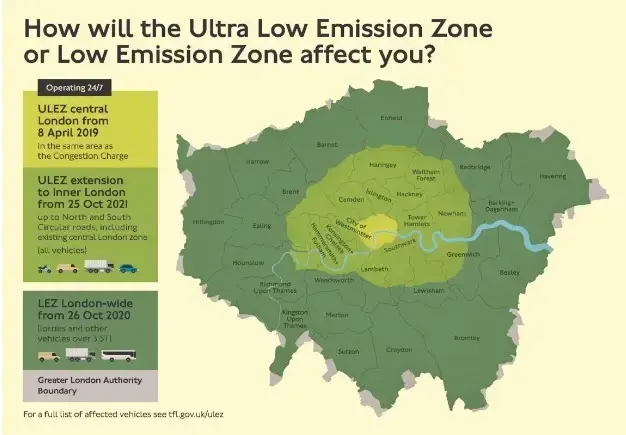
5. Barcelona
Barcelona tackles climate change by providing incentives for its citizens to go about their days in a more sustainable way. The advantages of owning an electric vehicle in the Spanish city are:
- 75% rebate on the tax associated with mechanically powered vehicles
- Exemption from a vehicle registration fee
- Toll booth discounts for disregarding 10+-year-old vehicles
- Free parking in select areas of the city
Barcelona city officials have partnered with Enel X and TMB to install ultra-fast charging stations for e-buses. In five to eight minutes, the e-bus receives a 40% to 80% recharge. Additionally, like London, Barcelona has set up a Low Emissions Zone to push more people toward electric cars, scooters, and other sustainable transportation. The LEZ comprises the municipalities of Sant Adrià del Besòs, L'Hospitalet de Llobregat, Esplugues de Llobregat, and Cornellà de Llobregat.
The city also offers a free “Green Ticket” called T-Verda, which allows residents to scrap their diesel-fueled vehicles to receive free public transportation for three years.
Figure 5: E-Bus Traveling through the Streets of Barcelona
(Source: Transports Metropolitans de Barcelona)
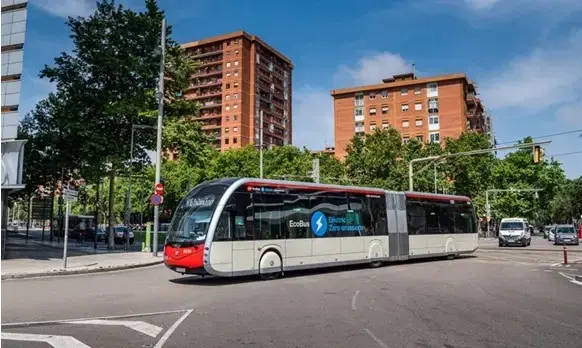
6. Shenzhen, China
Our next sustainable city example comes from Shenzhen, a city located on China’s southeastern coast, which has been crucial in developing the country’s manufacturing output. But that has come with significant environmental consequences, creating the impetus to minimize carbon footprints. In 2010, the Chinese government chose the city of 13 million people as one of 11 provinces and cities to test decarbonization solutions.
Shenzhen has come a long way and now has more than 16,000 electric buses and 22,000 electric taxis. Electrifying the fleet of taxis has resulted in about 70% energy consumption savings and reduced annual emissions by 856,000 tons/annum.
Shenzhen is the first Chinese city to use carbon trading and to issue carbon bonds, which incentivize enterprises to decarbonize. Some other notable actions this sustainable city has taken include:
- Pollution liability insurance
- Green infrastructure standards
- Retrofitting city infrastructure, such as buildings
- Park protection
- The banning of burning highly pollutant fuels.
Figure 6: Photo of Shenzhen’s Electric Taxi Fleet Being Charged
(Source: Phys.org)
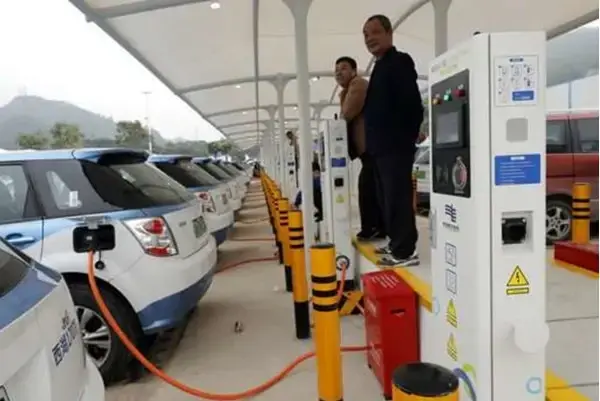
7. Bratislava, Slovakia
Bratislava, the capital of Slovakia, has invested substantially in promoting a circular economy. The digitalization of the city's waste management processes is an integral component of this ambition.
Smart waste management company Sensoneo is the main solution provider that Bratislava city officials have turned to. They’ve digitalized 85,000 containers, installed 1,753 Senseneo sensors to track glass waste and underground bins, and deployed ninety-two Senseneo WatchDog devices on waste removal vehicles, among other actions. With this approach, the officials have fuller transparency on the waste removal needs of the city and empower waste removal operators to make timely pickup schedules. The city also leverages a fleet management platform to receive real-time updates about the routes and locations of the trucks on the road
As part of its goal for zero-carbon building renovation, Bratislava has teamed up with the international European Union (EU) project GUGLE -Smart Cities and Communities. Energy efficiency is the cornerstone of Bratislava’s climate policy. Some ways the city promotes energy efficiency include:
- Enhancing the thermal capability of buildings (insulation, rooftop renovation, windows, etc.)
- Using more efficient heating devices in flats
- Leveraging renewable energy sources like heat pumps, solar, and biomass systems.
- City officials have also schemed ways to position gas heating stations in locations where the distance for transition is relatively low in all directions, which saves costs.
With transportation accounting for a third of Slovakia’s greenhouse gas pollution, Bratislava officials have worked on a 246 million euro project that upgrades the city’s existing train and trolley systems. To get citizens onboard with the sustainability goals, city officials are focused on educating citizens on the benefits of taking public transportation and shared micromobility services so that fewer diesel-fueled vehicles pollute the local environment.
In another project, Bratislava collaborated with oil refining company Slovnaft to install 90 bike-sharing stations with 750 bikes. Between late 2018 and mid- 2019, the following results were achieved:
- 44,600 users
- 275,000 journeys served
- More than 500,000 Kilometers (Km) traveled
- Roughly 60,000 Kilograms (Kgs) of CO2 emissions saved
Figure 7: Photo of a Bike Sharing Station and Several Bikes Available for Rental in Bratislava
(Source: welcometobratislava.edu)
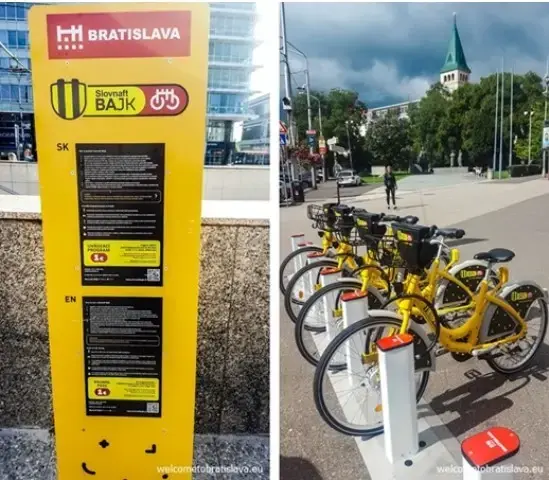
Cities Have Options When It Comes to Creating Greener Urban Spaces
As you can see from these seven examples, cities around the world are handling sustainability in a variety of ways. While we’re likely decades away from net-zero emissions, there are a number of proven tactics and strategies to help get the ball rolling. To learn more about these concepts—and to identify the technologies to make your green initiatives come to life—download ABI Research’s Urban Decarbonization Strategies and the Role of Smart Cities research report. This report is part of the company’s Smart Buildings Research Service.

